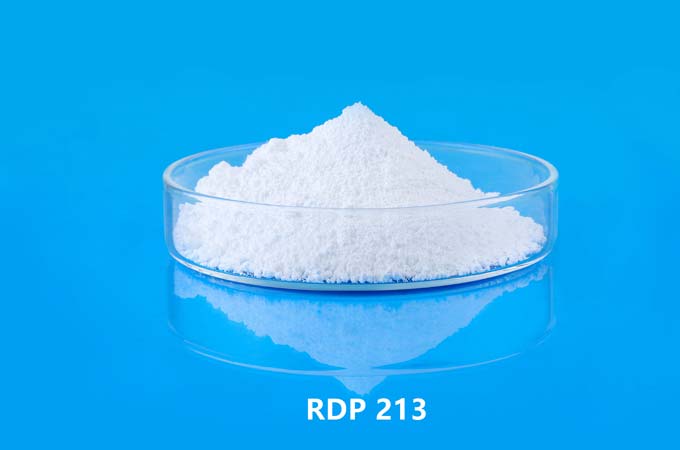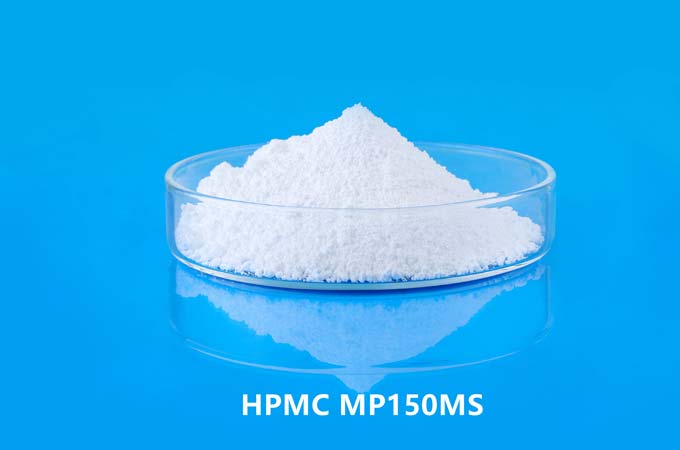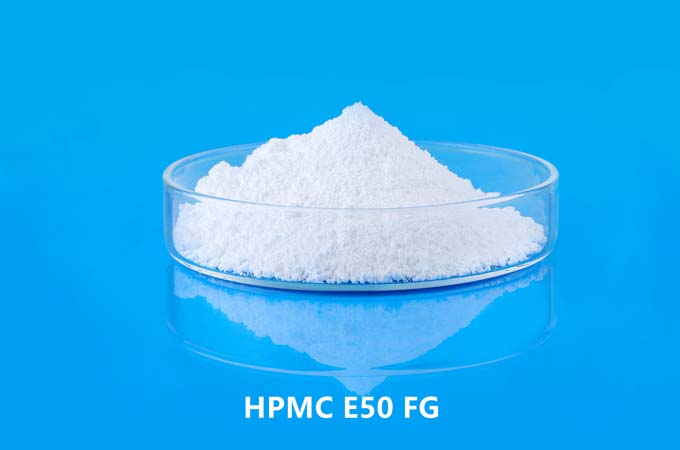Hydroxypropyl methylcellulose is white or off-white powder. It is mainly used as a dispersant in the production of polyvinyl chloride. In addition, it is used as a thickener, stabilizer, emulsifier, and film-forming agent in the production of other petrochemicals, coatings, building materials, paint removers, papermaking, and cosmetics.
Table of Contents
1 product name
2 Physical and chemical properties
3 main purpose
4 Dissolution method
5 Precautions
6 models
Name Editor
English: Hydroxypropyl Methyl Cellulose Abbreviation: HPMC or MHPC
Alias: hydroxypropyl methylcellulose; cellulose hydroxypropyl methyl ether;
Hypromellose, Cellulose,
2-hydroxypropyl methyl Cellulose ether. Cellulose hydroxypropyl methyl ether Hyprolose;
Physical and Chemical Propertiesedit
1. Appearance: white or off-white powder.
2. Particle size; the pass rate of 100 mesh is greater than 98.5%; the pass rate of 80 mesh is greater than 100%.
3. Carbonization temperature: 280-300℃
4. Apparent density: 0.25-0.70/cm3 (usually around 0.5g/cm3), 5. Specific gravity: 1.26-1.31.
6. Discoloration temperature: 190-200℃
7. Surface tension: 2% aqueous solution is 42-56dyn/cm.
8. Soluble in water and some solvents,
9. Such as proper proportion of ethanol/water, propanol/water, trichloroethane, etc. Aqueous solutions are surface active. High transparency,
10. Stable performance,
11. Products with different specifications have different gel temperatures.
12. Solubility varies with viscosity, the lower the viscosity, the greater the solubility
13. Different specifications of HPMC have certain differences in performance
14. The dissolution of HPMC in water is not affected by the pH value.
15. With the reduction of methoxyl content, the gel point increases, the water solubility decreases, and the surface activity of HPMC also decreases.
16. HPMC also has the characteristics of thickening ability, salt resistance, low ash powder, PH stability, water retention, dimensional stability, excellent film forming, and wide range of enzyme resistance, dispersibility and cohesiveness.
Main Purposeedit
This product is industrial-grade HPMC, mainly used as a dispersant in the production of polyvinyl chloride, and is the main auxiliary agent for the preparation of PVC by suspension polymerization. In addition, it can be used as a thickener, stabilizer, emulsifier, excipient, and water-retaining agent in the production of other petrochemicals, coatings, building materials, paint removers, agricultural chemicals, inks, textile printing and dyeing, ceramics, papermaking, cosmetics, etc. , film forming agent, etc. The application in synthetic resin can make the obtained product have the characteristics of regular particle size, looseness, appropriate specific gravity, and excellent processing performance, thus basically replacing gelatin and polyvinyl alcohol as dispersants. In addition, in the construction process of the construction industry, it is mainly used in mechanized construction such as wall building, stucco decoration, and caulking; especially in decorative construction, it is used for pasting ceramic tiles, marble, and plastic decorations. Cement consumption. It is used as a thickener in the paint industry, which can make the layer bright and delicate, prevent powder removal, improve leveling performance, etc.
use
This product is used as thickener, dispersant, binder, excipient, oil-resistant coating, filler, emulsifier and stabilizer in the textile industry. It is also widely used in synthetic resin, petrochemical, ceramics, paper, leather, medicine, food and cosmetics and other industries.
The Main Purpose
1. Construction industry: As a water-retaining agent and retarder of cement mortar, it can make the mortar pumpable. In plaster, gypsum, putty powder or other building materials as a binder to improve spreadability and prolong work time. It can be used as paste tile, marble, plastic decoration, paste reinforcement, and can also reduce the amount of cement. The water-retaining performance of HPMC prevents the slurry from cracking due to drying too quickly after application, and enhances the strength after hardening.
2. Ceramic manufacturing industry: It is widely used as a binder in the manufacture of ceramic products.
3. Coating industry: It is used as a thickener, dispersant and stabilizer in the coating industry, and has good compatibility in water or organic solvents. As a paint remover.
4. Ink printing: It is used as a thickener, dispersant and stabilizer in the ink industry, and has good compatibility in water or organic solvents.
5. Plastics: used as forming release agent, softener, lubricant, etc.
6. Polyvinyl chloride: It is used as a dispersant in the production of polyvinyl chloride, and it is the main auxiliary agent for preparing PVC by suspension polymerization.
7. Others: This product is also widely used in leather, paper products, fruit and vegetable preservation and textile industries.
8. Pharmaceutical industry: coating materials; film materials; rate-controlling polymer materials for sustained-release preparations; stabilizers; suspending agents; tablet adhesives; viscosity-increasing agents
Specific Industry Application
Construction Industry
1. Cement mortar: Improve the dispersion of cement-sand, greatly improve the plasticity and water retention of mortar, have an effect on preventing cracks, and enhance the strength of cement.
2. Tile cement: improve the plasticity and water retention of pressed tile mortar, improve the adhesion of tiles, and prevent chalking.
3. Coating of refractory materials such as asbestos: as a suspending agent, fluidity improving agent, and also improves the bonding force to the substrate.
4. Gypsum coagulation slurry: improve water retention and processability, and improve adhesion to the substrate.
5. Joint cement: added to joint cement for gypsum board to improve fluidity and water retention.
6. Latex putty: improve the fluidity and water retention of resin latex-based putty.
7. Stucco: As a paste to replace natural products, it can improve water retention and improve the bonding force with the substrate.
8. Coatings: As a plasticizer for latex coatings, it can improve the operability and fluidity of coatings and putty powders.
9. Spraying paint: It has good effect on preventing the sinking of cement or latex spraying materials and fillers and improving fluidity and spray pattern.
10. Secondary products of cement and gypsum: used as an extrusion molding binder for cement-asbestos and other hydraulic substances to improve fluidity and obtain uniform molded products.
11. Fiber wall: Due to the anti-enzyme and anti-bacterial effect, it is effective as a binder for sand walls.
12. Others: It can be used as air bubble retaining agent (PC version) for thin clay sand mortar and mud hydraulic operator.
Chemical Industry
1. Polymerization of vinyl chloride and vinylidene: As a suspension stabilizer and dispersant during polymerization, it can be used together with vinyl alcohol (PVA) hydroxypropyl cellulose (HPC) to control particle shape and particle distribution.
2. Adhesive: As a adhesive for wallpaper, it can be used together with vinyl acetate latex paint instead of starch.
3. Pesticides: Added to insecticides and herbicides, it can improve the adhesion effect when spraying.
4. Latex: Emulsion stabilizer for asphalt latex, thickener for styrene-butadiene rubber (SBR) latex.
5. Binder: as a forming binder for pencils and crayons.
Cosmetics Industry
1. Shampoo: Improve the viscosity of shampoo, detergent, and cleaning agent and the stability of bubbles.
2. Toothpaste: Improve the fluidity of toothpaste.
Food Industry
1. Canned citrus: prevent whitening and deterioration due to the decomposition of citrus during preservation to achieve freshness preservation.
2. Cold fruit products: add to sherbet, ice, etc. to make the taste better.
3. Seasoning sauce: used as emulsification stabilizer or thickener for sauce and tomato sauce.
4. Cold water coating and glazing: used for frozen fish storage, which can prevent discoloration and quality reduction. After coating with methyl cellulose or hydroxypropyl methyl cellulose aqueous solution, freeze it on ice.
5. Adhesive for tablets: As a forming adhesive for tablets and granules, it has good bonding "simultaneous collapse" (rapidly melts and collapses when taken).
Pharmaceutical Industry
1. Coating: The coating agent is made into an organic solvent solution or an aqueous solution for drug administration, especially spray coating the prepared granules.
2. Slow down agent: 2-3 grams per day, 1-2G each time, the effect will appear in 4-5 days.
3. Eye drops: Since the osmotic pressure of methylcellulose aqueous solution is the same as that of tears, it is less irritating to the eyes, so it is added to eye drops as a lubricant for contacting the eyeball lens.
4. Jelly: as the base material of jelly-like external medicine or ointment.
5. Dipping medicine: as a thickener and water retention agent.
Kiln Industry
1. Electronic material: as a binder for extrusion molding of ceramic electrical seals and ferrite bauxite magnets, it can be used together with 1.2-propylene glycol.
2. Glaze: used as glaze for ceramics and in combination with enamel paint, it can improve bonding and processability.
3. Refractory mortar: Added to refractory brick mortar or pouring furnace materials, it can improve plasticity and water retention.
Other Industries
1. Fiber: Used as printing dye paste for pigments, boron dyes, basic dyes, and textile dyes. In addition, it can be used together with thermosetting resins in kapok corrugation processing.
2. Paper: used for leather surface gluing and oil-resistant processing of carbon paper.
3. Leather: used as final lubrication or one-time adhesive.
4. Water-based ink: Added to water-based ink and ink, as a thickener and film-forming agent.
5. Tobacco: as a binder for regenerated tobacco.
Dissolving MethodEdit
1. Take the required amount of hot water, put it into a container and heat it to above 85°C, and gradually add this product under slow stirring. The cellulose floats on the water surface at first, but is gradually dispersed to form a uniform slurry. The solution was cooled while stirring.
2. Or heat 1/3 or 2/3 of the hot water to above 85---, add cellulose to get hot water slurry, then add the remaining amount of cold water, keep stirring, and cool the obtained mixture.
 English
English 日本語
日本語 français
français Deutsch
Deutsch Español
Español italiano
italiano русский
русский português
português العربية
العربية Türkçe
Türkçe Nederland
Nederland



